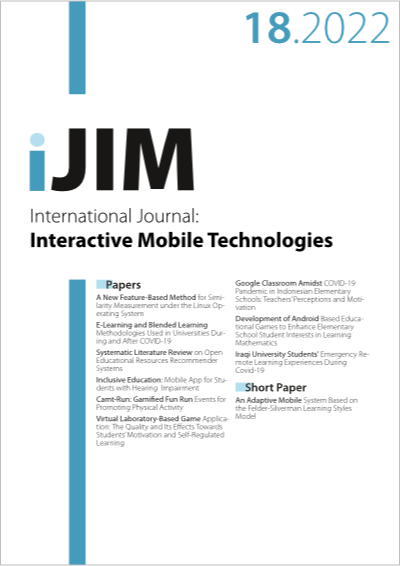E-Learning and Blended Learning Methodologies Used in Universities During and After COVID-19
DOI:
https://doi.org/10.3991/ijim.v16i18.32721Keywords:
e-learning platforms, Hashemite University, blended learning, Online learningAbstract
As a response to the COVID-19 pandemic, various e-learning platforms are being used in different universities. E-learning platforms such as Microsoft Teams, Zoom, Moodle, Google Classroom provides different features that may be helpful during the pandemic. In this research, the number of registered students, the activities held on e-learning platforms before, during, and after the pandemic are compared in Hashemite University as a case study. The analysis shows that the interaction between students and their lecturers has increased by more than 90% across all platforms at the Hashemite University during the pandemic. However, it has increased by 64% with the Moodle platform. The effect of three learning methods; face-to-face, blended, and online learning is examined and the preference of students investigated with courses’ categories such as remedial materials, collage requirements, specialization materials, and free materials. The students preferred online learning for remedial and free materials, with percentage values of 75% and 57%, respectively, but face-to-face learning is chosen for collage requirements and specialization materials, with percentage values of 54% and 78%, respectively.
Downloads
Published
How to Cite
Issue
Section
License
Copyright (c) 2022 Ghadeer Ghazal, Marwah Alian, Eslam Alkhawaldeh

This work is licensed under a Creative Commons Attribution 4.0 International License.



